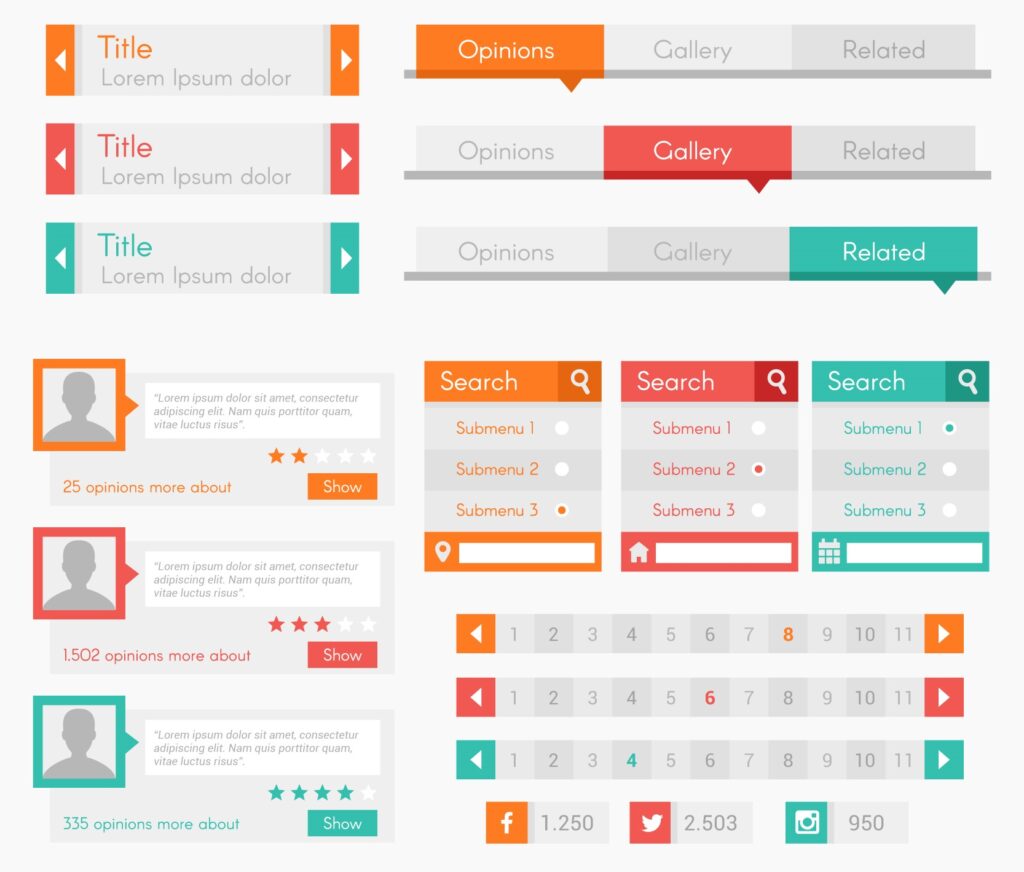With digital retail behemoths like Amazon and Alibaba transforming consumer behavior, the e-commerce landscape experiences one unprecedented shift after another Small and medium-sized enterprises are feeling the heat, grappling to keep their share of the market. For many, it’s not just about surviving, it’s about staying relevant in an era where customer expectations are skyrocketing, and the competition is only a click away.
Picture this: You’ve invested a fortune into creating a stunning e-commerce website. You’ve meticulously selected your inventory, your branding is on point, and you’ve launched a full-fledged digital marketing campaign. Yet, despite all this, your bounce rate is alarmingly high, cart abandonment rates are through the roof, and conversion rates are far from satisfactory.
It’s the classic e-commerce nightmare that gives even the most seasoned of digital entrepreneurs cold sweats. So where are these businesses going wrong? The answer may lie not in what they’re doing, but rather in whom they’re doing it for.
Table of Contents
What can save this pity party? User personas!
User personas are fictional yet data-driven characters who embody the needs, goals, and behavior patterns of your target audience segment. They are the lighthouse guiding your ship in the rough seas of e-commerce. They help illuminate the path to effective website design, insightful product selection, impactful content creation, and strategic marketing.
An impressive 71% of companies claimed they exceeded their lead generation and revenue targets after integrating user personas into their sales and marketing strategies.
Yet, user personas are often overlooked, sometimes dismissed as marketing jargon or an unnecessary exercise. The reality, however, is that user personas could be the missing link, the secret ingredient, that transforms your online store from being just another marketplace into a customer magnet.
No more shooting in the dark, it’s time to put a face to those user statistics, and let’s make your e-commerce business persona-driven.
Empathy and Research: Kick-Start The Creation of Your User Personas
We’ve all been there. Poring over Excel spreadsheets packed with user data, or maybe observing a confusing heatmap that seems more like a toddler’s art project than a tool to drive conversions. We’re drowning in a sea of data, but is that data telling us a story? Is it giving us an intimate understanding of the people who visit our websites? This is where user personas can throw us a lifeline.
User personas aren’t just fictional characters cooked up by your marketing team. They’re vivid, data-driven profiles embodying your key audience segments. A well-researched user persona isn’t Betty, the 25-year-old who likes online shopping. It’s ‘Budget-conscious Betty,’ the 25-year-old grad student surviving on ramen, who loves hunting down deals and spends Saturday afternoons trawling through second-hand bookstores.
Examples of creating user personas
Here are some more examples. Check all of them, as we will use these “people” further in our article.
| Basic User Persona | Detailed User Persona |
| John: A 30-year-old man who likes technology. | “Tech Guru John”: A 30-year-old IT consultant from Austin, Texas. He’s an avid follower of tech trends and loves tinkering with the latest gadgets. He’s always on the lookout for cutting-edge products that can make his work more efficient and stays loyal to brands that keep pace with the tech landscape. |
| Sara: A 45-year-old woman who enjoys reading. | “Bookworm Sara”: A 45-year-old single mom and a high school literature teacher from Portland, Oregon, who spends her evenings lost in classic novels. She values quality hardcovers and reads reviews before making purchases. An easy-to-navigate book category and an insightful book review section are a must for her ideal online bookstore. |
| Tom: A 20-year-old college student who plays sports. | “Athlete Tom”: A 20-year-old college soccer player studying in Boston. He is constantly seeking high-performance athletic gear that can withstand rigorous training sessions. He values product durability, and customer reviews, and appreciates detailed product descriptions that explain the technology used in the sportswear. |
| Susan: A 65-year-old woman who shops online. | “Savvy Shopper Susan”: A 65-year-old retired nurse living in Miami. She enjoys the convenience of online shopping but values secure and easy-to-use platforms. She prefers stores that offer exceptional customer service, simple checkout processes, and clear product images and descriptions. |
See the difference? The devil, as they say, is in the details. The more fleshed-out your personas are, the better you can empathize with them. And empathy, my friends, is the secret sauce to any successful customer experience strategy.
How to create user personas?
Research is the bedrock of creating these personas. Remember, assumptions are the kryptonite here. That survey you’ve been putting off, the website analytics you glazed over, the customer interviews you’ve been meaning to conduct – it’s time to roll up your sleeves and dive into the data.
Data from different sources will lend different insights. Direct interviews might give you a glimpse into their motivations and pain points. Analytics might show you behavioral trends. Surveys might reveal patterns you didn’t think existed. These pieces of information, when put together, form the mosaic of your user personas.
This isn’t a one-and-done task. Your user personas need to evolve as your business and customer base grow and change. Regular refinement and updates are critical. Stale personas can lead to out-of-touch strategies that can send your customers running in the opposite direction.
Remember Blockbuster? They sure could’ve used a couple of updated user personas.
On a positive note, a case study on Intel revealed that buyer personas surpassed campaign benchmarks by 75% and were more cost-efficient than the average campaign by 48%.
Advanced Techniques in Creating User Personas
Bare-bones profiles of your customers won’t cut it anymore. In a marketplace that’s constantly evolving, static, superficial personas are as good as no personas at all. Let’s level up. Let’s look at how we can breathe life into our user personas, make them more dynamic, and ensure they stay relevant over time. Buckle up, it’s time to go advance.
Diversify Your Data Collection Methods
Simply relying on your website analytics or a one-off customer survey isn’t enough. Cast a wider net. Consider direct interviews, customer feedback, social media monitoring, and even third-party research. A diversified data pool offers a more holistic view of your customers. Remember, diverse data fuel richer personas.
Explore Behavioral Segmentation
Demographics can tell you who your customers are, but behavioral data can tell you why they do what they do. Are they bargain hunters or impulsive shoppers? Do they read blogs or watch product videos? Understanding their behavior can help you get into the ‘why’ behind their actions, and that’s gold.

How to obtain behavioral data?
You can easily obtain behavioral data by harnessing the power of behavioral analytics tools. Behavioral analytics tools are capable of discovering insights that traditional analytics cannot. With the help of session replays, you can accurately trace every visitor’s path on your website. This enables you to determine how most of your visitors interact with your site and also create segments.
Consider Psychographics
Go beyond age and income. What are their values, attitudes, interests, or lifestyle? ‘Budget-conscious Betty’ isn’t just a grad student looking for deals, she’s an eco-conscious shopper who prefers businesses that advocate for sustainability. Psychographic details can give you deeper insights into your customer’s mindset.
Construct Negative Personas
While it’s important to know who your customers are, it’s equally important to know who they aren’t. Constructing negative personas – representations of who you’re not targeting – can save you time and resources and improve the quality of your leads.

Create Provisional Personas
Sometimes, you don’t have enough data to create comprehensive user personas. That’s okay. Start with provisional personas based on educated assumptions. As more data trickles in, refine these personas.
Keep Iterating and Updating
User personas aren’t set in stone. They’re dynamic and should evolve with your changing customer base, market trends, and business strategy. Make sure to revisit your personas periodically, validate them, and tweak them as necessary. Staying adaptable is the key to staying relevant.
Each of these techniques can lend your personas a level of depth and dynamism that can significantly enhance your understanding of your customers. However, remember that personas are just a tool. They don’t replace direct customer feedback or real-time data. So, while you’re fleshing out ‘Tech Guru John’ or ‘Bookworm Sara’, remember to keep an ear to the ground. After all, there’s nothing more valuable than staying connected with your real customers.
Applying User Personas to E-Commerce Website Design
Imagine, you’re hosting a dinner party. Wouldn’t it be wise to know your guests’ dietary preferences before planning the menu? User personas are no different. They’re your dinner guests. Knowing them inside and out will help you design an e-commerce experience that’s not just pleasing, but also effective.
Over 75% of customers have selected, recommended, or paid more when personalized experiences were provided. The same research shows that over 70% of buyers were frustrated by the absence of personalization.
You don’t want to frustrate so many customers, you simply don’t. Here is how you avoid it.
Influence Website Structure and Navigation
Your website structure should cater to how your users think and behave. Let’s take our ‘Bookworm Sara’ – she values an easy-to-navigate book category and insightful book reviews. A well-structured website, categorizing books by genre, author, and rating, with an easy-to-find review section, would cater to her needs perfectly.

Inform UI/UX Design Decisions
User personas can guide your user interface and user experience (UI/UX) design decisions. For instance, ‘Tech Guru John would appreciate a sleek, modern UI with advanced features, while ‘Savvy Shopper Susan’ would appreciate a simple, user-friendly design with clear product descriptions and straightforward checkout processes. UI development process should use such information as beacons, following them even when it means the team has to work harder on some of the website’s parts.
Personalize Content and Messaging
Your personas’ interests, motivations, and behaviors can help tailor your content and messaging. For ‘Athlete Tom,’ highlighting the technology behind your sportswear in product descriptions and content pieces could be a game-changer. Similarly, ‘Budget-conscious Betty’ would respond to messages around deals, savings, and value for money.
A/B Test Design Choices
Use your personas to run A/B tests on design elements. Maybe ‘Tech Guru John’ engages more with a dark theme, while ‘Bookworm Sara’ prefers a light theme. Perhaps ‘Budget-conscious Betty’ responds better to price-saving badges on product images. User personas can guide your hypotheses for A/B testing.
Design for Accessibility
Remember, accessibility is key. Some of your personas may have disabilities or special needs. Designing with them in mind is not only ethically right but also widens your customer base. Transcriptions for ‘Bookworm Sara’ who is hard of hearing or high contrast buttons for ‘Savvy Shopper Susan’ who has a vision impairment can go a long way in making your website inclusive.
By applying user personas to your e-commerce website design, you can create a tailored shopping experience that feels personal and intuitive to your customers. Remember, a website designed for everyone, in the end, caters to no one. So let’s put those personas to work and make your e-commerce platform a place where every visitor feels at home.
Case Study: Transforming E-Commerce Website Using User Personas
The best way to understand the impact of user personas on e-commerce website design is through a real-life example. Ours comes from a web development company, QArea, whose experts agreed to walk us through a case study of their work with ‘Healthy Harvest,’ an online health food store. Here, we will give them the floor to learn everything from the first hands:
“When Healthy Harvest approached, they were battling high bounce rates and low conversion rates. Although they had a robust product range and a seemingly user-friendly website, something was missing. The first thing we did? We dug deep into their customer data to craft comprehensive user personas.
After meticulous data collection and analysis, we came up with three primary personas: ‘Organic Olivia,’ a health-conscious mom; ‘Vegan Victor,’ a college student who has adopted a plant-based lifestyle; and ‘Gluten-free Grace,’ a professional woman managing celiac disease. Each persona had unique needs, preferences, and shopping behaviors. Using these personas, we initiated a complete overhaul of the Healthy Harvest website.

Influencing Website Structure and Navigation
We restructured the website to match the thought process of our personas. Also we did some steps to organize products into easily navigable categories such as ‘Organic,’ ‘Vegan,’ and ‘Gluten-free’. We even added a ‘Quick Shop’ feature for busy ‘Organic Olivia’ to easily reorder her regular items.
Informing UI/UX Design Decisions
We simplified the UI to cater to ‘Organic Olivia,’ who is not too tech-savvy. We added detailed product descriptions with nutritional information vital for ‘Gluten-free Grace’ and ‘Vegan Victor.’
Personalizing Content and Messaging
We started a blog to share healthy recipes, nutritional tips, and lifestyle advice, keeping ‘Organic Olivia’s’ interest in healthy family meals and ‘Vegan Victor’s’ curiosity about plant-based living in mind.
A/B Testing Design Choices
We ran A/B tests on multiple design elements. For example, we tested different color schemes and found that a green and white palette resonated most with our personas, projecting an image of freshness and health.
Designing for Accessibility
Keeping potential disabilities in mind, we made sure our website was fully accessible, with alternative text for images, keyboard-friendly navigation, and transcripts for video content.
The results were nothing short of impressive. Within six months of the redesign, Healthy Harvest saw a 35% drop in their bounce rate, a 25% increase in average session duration, and a whopping 50% increase in their conversion rate.”
This case study is a testament to the transformative power of user personas in informing e-commerce website design. Understanding your users is the first step to providing them with a website that feels custom-built just for them. For more tips on boosting your sales via smart, cost-efficient methods, follow this e-commerce app development guide, and reach your goals in no time.
In-depth Look at Common Missteps
As potent as user personas can be, they can quickly become ineffective or even detrimental if not handled correctly. From years of experience, we’ve seen businesses fall into certain traps time and again. Let’s throw light on these common missteps to ensure you don’t veer off the path.
Relying on Assumptions
Assumptions are the quickest way to render your personas useless. ‘Athlete Tom’ loves soccer, so he must love all sports, right? Wrong. It’s essential to base your personas on hard data, not stereotypes or assumptions.
Overgeneralization
Creating too broad a persona can lead to vague, ineffective strategies. ‘Woman aged 20-60 who shops online’ isn’t a persona, it’s a demographic segment. Remember our ‘Savvy Shopper Susan’ and ‘Bookworm Sara’? Both are women who shop online but with completely different needs and behaviors.
Ignoring Negative Personas
As we mentioned earlier, knowing who your customers aren’t is as important as knowing who they are. Ignoring negative personas can lead to wasted resources on targeting the wrong audience.
Failing to Update Personas
Just like your business, your customers also evolve over time. If ‘Tech Guru John’ was a persona created in 2010, it’s likely he’s no longer using a Blackberry in 2023. Regular updates to your personas are crucial to keep your strategies relevant.
Keeping Personas to Yourself
Personas are a valuable resource for your entire organization, not just your design or marketing team. If ‘Athlete Tom’ hates lengthy delivery times, your logistics team needs to know as much as your website design team does.
Creating Too Many Personas
While it’s essential to cover different customer types, having too many personas can make your strategies complex and diffused. Focus on a few critical personas that capture the majority of your user behavior.
Treating Personas as a One-Size-Fits-All Solution
Personas are a tool, not a magic wand. They need to be used in conjunction with other research methods and customer feedback. ‘Bookworm Sara’ can guide your strategy, but she can’t replace your real-life Saras.
Navigating these missteps will ensure you’re leveraging user personas effectively. Remember, a well-crafted persona is a tool. But like any tool, its success lies in the hands of the craftsman – you.
Emerging Trends in User Persona Development for E-Commerce
As we propel into the digital future, the way we develop and utilize user personas is rapidly evolving. Sticking to traditional methods may leave you lagging. So, let’s stay ahead of the curve by exploring some emerging trends in persona creation and use:
AI-Driven Data Analysis
Artificial Intelligence (AI) is making waves in personal development. With the capacity to analyze vast amounts of data at lightning speed, AI can unearth customer insights far beyond human capabilities. Machine learning algorithms can detect patterns and trends we might overlook, making our ‘Tech Guru John’ or ‘Bookworm Sara’ more accurate and dynamic. The era of AI-enhanced personas is here.

Real-Time Personalization
Remember ‘Savvy Shopper Susan’? She doesn’t want to wait for your next website update to see changes that cater to her needs. Real-time personalization, powered by AI and big data, enables you to modify user experience on-the-fly based on the user’s behavior during the session. If ‘Susan’ spends a lot of time in the ‘New Arrivals’ section, why not highlight that section in her subsequent visits?
Balance Between Personalization and Privacy
As personalization techniques become more advanced, privacy concerns loom larger. GDPR, CCPA, and other data protection laws underline the need for a delicate balance between personalization and privacy. Your ‘Bookworm Sara’ values her personalized recommendations, but not at the cost of her privacy. Keeping personalization transparent and under user control is no longer a best practice, but a necessity.

Integration with Customer Journey Mapping
More and more businesses are integrating user personas with customer journey mapping. By understanding the touchpoints and experiences of ‘Athlete Tom’ or ‘Budget-conscious Betty’ at different stages of their journey, you can enhance their experience throughout the customer lifecycle, not just on your website.
Social Media-Centric Personas
The ubiquity of social media has led to a rise in social media-centric personas. These personas focus on the user’s behavior, interests, and interactions on social platforms. Imagine a ‘Social Media Maven Mary,’ who loves to engage with brands on Instagram, appreciates interactive stories, and often shops through Instagram Shop. Catering to her needs requires a different approach than for ‘Tech Guru John’ who avoids social media.
User persona development is an ever-evolving field. Staying updated with these trends ensures that your personas continue to provide value in shaping your strategies and decision-making. Remember, adaptability is the name of the game in the digital world, and user personas are no exception.
Utilizing User Personas in E-Commerce: Wrapping It Up
We’ve traversed the journey from understanding what user personas are, through their creation process, to their practical applications in website design. We’ve examined the common pitfalls to avoid and even took a peek into the exciting future of persona development. With these insights in hand, you’re now ready to harness the power of user personas.
Remember our ‘Athlete Tom,’ ‘Bookworm Sara,’ ‘Tech Guru John,’ ‘Budget-conscious Betty,’ ‘Savvy Shopper Susan,’ and others? They are not just figments of imagination, but embodiments of real customers waiting to click ‘buy’ on your website. It’s your task to ensure their journey on your e-commerce platform is as intuitive, engaging, and satisfying as it can be.
In the whirlwind of metrics and KPIs, it’s easy to forget that behind every click, every purchase, and every bounce, there’s a real person with real needs and desires. User personas bring us back to this essential truth. They remind us that at the heart of every successful e-commerce business is a satisfied customer.
Don't forget, sharing is caring! :)


